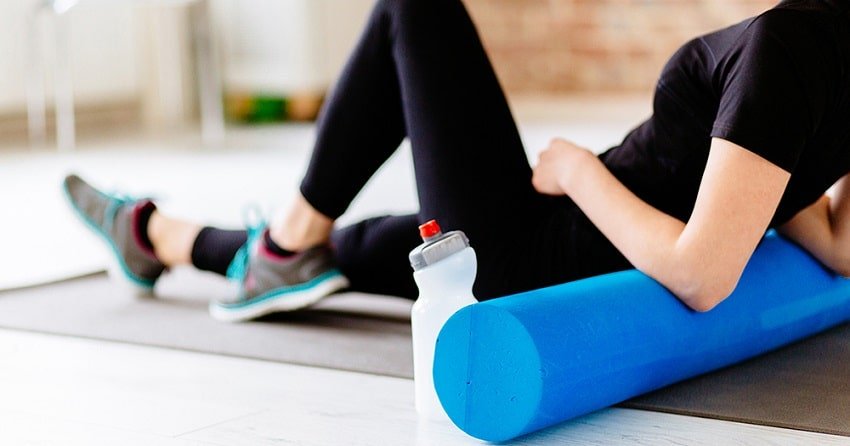
An energetic recovery workout involves performing low-intensity exercise carrying out a strenuous workout. These include walking, yoga, and swimming.
Active recovery is frequently considered more advantageous than inactivity, resting completely, or sitting. It may keep bloodstream flowing which help muscles recover and rebuild from intense exercise.
Avoid active recovery if you are hurt or in many discomfort, though. Signs and symptoms of the injuries might need to seen by a physician.
Advantages of active recovery
Active recovery work outs are advantageous for you. They will let you recover faster following a difficult workout. Some benefits include:
- reducing lactic acidity buildup in muscles
- eliminating toxins
- keeping muscles flexible
- reducing soreness
- growing bloodstream flow
- assisting you maintain your regular workout
Active versus. passive recovery
During passive recovery, your body stays completely resting. It might involve sitting or inactivity. Passive recovery is essential and advantageous if you are hurt or perhaps in discomfort. You may even need passive recovery if you are very tired, either psychologically or physically, after exercising.
If none of those conditions affect you and also you’re only generally sore, active recovery is recognized as a more sensible choice.
Three kinds of active recovery and how it operates
Research has shown that active recovery exercise might help obvious bloodstream lactate in your body. Bloodstream lactate may accumulate during intense exercise to cause a rise in hydrogen ions in your body. This accumulation of ions can result in muscle contraction and fatigue.
By taking part in active recovery, this accumulation decreases, helping parts of your muscles feel less fatigued and holding you back going. You might feel good next time you workout, too.
There’s a couple of new ways to take part in active recovery exercise.
As cooldown carrying out a workout
Following a tough workout, you might want to stop and sit or lie lower. But, should you move, it may greatly assist you to recover. Attempt to awesome lower progressively. For instance, should you selected a run or sprint, consider using a short, light jog or walk for ten minutes.
Should you be weightlifting or doing intense interval training workouts (HIIT), try the fitness bike in an easy pace for any couple of minutes. Being an active cooldown, make certain you’re working at a maximum of 50 % of the maximum effort. Progressively lower your effort after that.
During interval (circuit) training
Should you take part in interval or circuit training, some active recovery exercise between sets can also be advantageous.
Research through the American Council on Exercise discovered that athletes who ran or cycled until the purpose of fatigue retrieved faster while ongoing at 50 % of the maximum effort versus stopping completely.
On rest days following strenuous activity
Within the few days following a strenuous workout, you may still take part in active recovery. Try taking a walk or perhaps an easy ride a bike. You may also try stretching, swimming, or yoga.
Active recovery in your rest days can help parts of your muscles recover. This is particularly important if you are sore.
Planning an energetic recovery day
An energetic recovery day will include different activity out of your usual workout at the health club. You should not be working in a maximum effort. You need to go slow and never push yourself way too hard. Types of active recovery exercises include:
Swimming
Swimming is really a low-impact exercise that’s easy in your muscles and joints. One studyTrusted Source discovered that among triathletes who adopted a HIIT session with recovery within the pool were built with a better exercise performance the following day. Researchers think water might help reduce inflammation.
Tai-chi or yoga
Practicing tai-chi or yoga could be advantageous for active recovery. Both help stretch sore muscles while increasing versatility. It may also reduce stress and inflammation.
Walking or jogging
Walking is among the best types of active recovery. If you are a jogger, you may also choose a slow jog. Walking or jogging in a leisurely pace can enhance bloodstream flow which help with recovery.
A couple of minutes of motion the next day a difficult workout is sufficient to promote circulation which help reduce stiffness and soreness.
Cycling
Cycling in a leisurely pace is a superb method of getting within an active recovery. It’s low-impact and doesn’t put pressure in your joints. You are able to cycle either on the fitness bike or on the bicycle outdoors.
Myofascial release having a foam roller
Active recovery doesn’t only include movement. You can also stretch and roll a foam roller over parts of the body and obtain most of the same benefits.
In case your muscles are sore, foam moving might help relieve tightness, reduce inflammation, while increasing your flexibility.
Safeguards
Active recovery workouts are generally considered safe. If you are in discomfort and suspect you possess an injuries, avoid active recovery. Stop exercising before you visit a physician.
A physician or perhaps a physical counselor may recommend types of active recovery including stretches, swimming, or cycling while you get over an injuries.
During active recovery, make certain you’re not working harder than about 50 % of the maximum effort. This gives the body the possibility it must rest.
Takeaway
You might find that you simply feel less tight, sore, as well as convey more energy to workout after active recovery. If you are hurt, in discomfort, or very fatigued, the body may require passive recovery rather.
